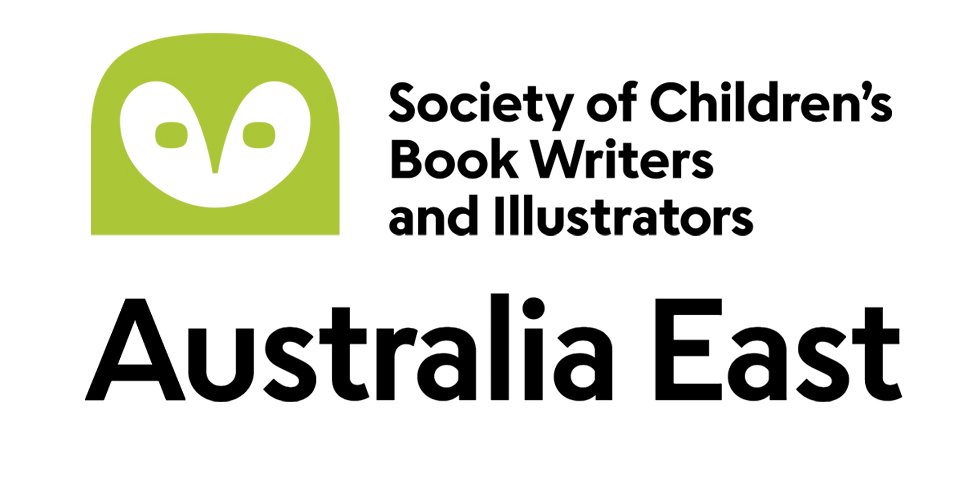A deep dive into editing and illustrating with two stars of the kidlit world on 19 March
Reported by Jemima Parker, SCBWI Australia East
Zoe Walton: Ranger’s Editor or… behind the scenes of a New York Times bestselling series
Zoe took us through a range of editing techniques, using John Flanagan’s Ranger’s Apprentice fantasy adventure series for middle grade and teen readers, as an example.
The pack pony or… how to weave in believable solutions to plot problems: Be aware of solutions to plot problems appearing out of nowhere. Make sure any plot devices that you think are necessary to the plot, and all the motivations of your characters, are woven into the story in a natural way, so they don't just appear out nowhere.
The wargal attack or… are your characters continuing to grow and change? Remember, your hero needs to have some flaws. They don't have to be heroic all the time, and it'd be really boring if they were. There's no drama if the hero can just do everything easily and make the problems go away. You've got to give your characters, especially your hero, flaws and mistakes to keep your readers turning the pages.
The Biggles technique or… how a cliffhanger ending can keep your readers up way past bedtime: A great chapter ending leaves the reader breathless to know more, and makes putting the book down at the end of the chapter almost impossible. So, make your chapter ending work hard. It could be the moment of a dramatic reveal, a killer joke or a meaningful and punchy emotional line. The Biggles technique refers to a story that has multiple points of view, and after a cliffhanger chapter ending, switches to another character, and then the reader has a whole chapter to wait! Definitely one to consider if your story has multiple points of view.
Solving the puzzle or... are your chapters and storylines in the right order? If you feel that something isn’t quite right, it can be really useful to create a chapter summary or breakdown. Look at creating a table with the headings: Chapter, Pages, What happens and Notes. This can help clarify where something isn’t right, for example a very long chapter.
The cosy dinner or... how to make sure a story is always moving onwards, not feeling episodic or slow: One of John’s secrets for solving writer’s block, is writing a scene of his characters having a coffee or a meal together. However, ultimately, that scene may need to be deleted. Remember: You can have slower moments, but everything still needs to move the story forward.
“In writing a novel, we agreed that every word set on paper - every word set on paper - must carry the story forward, and that as the story progress, the story must be carried forward faster and faster, and with more and more intensity.” - Ford Madox Ford
Show don’t tell or… yes, even New York Times bestselling authors get this feedback! If something is happening, involve your character in it. For example, don’t tell us about bad weather patterns, re-write it from the character’s point of view. What are they feeling and experiencing?
The grey, shaggy horse or… style sheets are amazing! Style sheets are important for keeping track of all sorts of details. Consider starting your own stylesheet.
The little ship was a little slow or… watching out for repetitions: Be mindful of repeated words, lots of adverbs to describe your dialogue, multiple adverbs on one page, actions your characters are taking, etc.
Thank you Zoe for such a generous presentation – especially on your birthday!
Gus Gordon: Making books, telling stories; from a story seed to publication
Gus treated us to a wonderful behind-the-scenes look at his studio space and discussed the importance of having a good space to get messy, and just have some fun. Allow yourself to play, and be a kid again, with your scissors and your glue. Try using crayons to loosen up your drawing.
We got a peek into some of Gus’ studio drawers at his gorgeous collection of papers, collected over many years. Japanese papers, patterned papers, tissue paper for painting on (like Eric Carle), old papers from travels, particularly France – maps, postcards, receipts, matchbox labels, shopping catalogues with vintage engravings, accounting ledgers – all sorts of things that people have kept, some over 100 years.
For Gus, physically making marks on paper is integral to his process. He draws and paints everything by hand, only using a scanner to help create his collages, to avoid cutting up his beautiful old papers.
Where do ideas come from? Allow yourself to daydream, and read, read, read! Gus does lots of sketching without conscious thought to help his characters and stories reveal themselves. All of his stories began with a sketch – and then connected with something else.
“This is often the way ideas work, isn't it? When we connect things that are not normally, something that you'd naturally connect, but we find a way to string these narratives together. It's like, you know, connecting dots,” says Gus.
Sketching also allows Gus to develop his characters. He does drawings to ask questions and drawings to find out what the story is.
Gus also shared about his latest book, a graphic novel, Into the Bewilderness, coming out next year. What a treat to get an insight into the creation of this wonderful looking book!
It began as two character drawings. As Gus kept drawing these characters, more details emerged. Their names. Their personalities. A story was taking shape, but it wasn’t working as a picture book. Once Gus’ agent suggested a graphic novel, Gus kept drawing, and drawing. The story started to reveal itself and the characters continued to develop.
The graphic novel format is completely new for Gus, and he has particularly enjoyed the way that it kind of has a bit of everything, from big double page spreads, to lots of panels.
The book is currently in the editing process now. Keep an eye out for it in 2024!
Thank you Gus for a virtual tour of your studio, and a wonderful insight into your creative process.
…..
Zoe Walton—Publisher, Penguin Random House Australia
Zoe Walton is a publisher of books for young readers at Penguin Random House Australia. Zoe edits New York Times bestseller John Flanagan, whose Ranger’s Apprentice and Brotherband series have sold 15 million copies. She publishes popular and award-winning Australian authors including Deborah Abela, Nat Amoore, Tristan Bancks, Tim Harris, Shirley Marr, Tobias Madden, Belinda Murrell, Lynette Noni, A.L. Tait, Renée Treml and Anna Zobel.
Gus Gordon is an internationally acclaimed illustrator and author. He has illustrated and written over 80 books for children. His books Wendy, Herman and Rosie (2013 CBCA Honour book), Somewhere Else (2017 Speech Pathology book of the year), The Last Peach and Finding François have sold in over 20 countries worldwide and have received wide recognition. He has been shortlisted for the German Youth Literature Award, the Sakura Medal in Japan, the Kirico book awards in Spain, the Les Incorruptibles prize in France, the Premio Anderson Children’s Book award in Italy and has twice been nominated for the Astrid Lindgren Memorial Award, the world’s largest award for children’s and young adult literature. He lives with his wife and three kids in Sydney, Australia.


